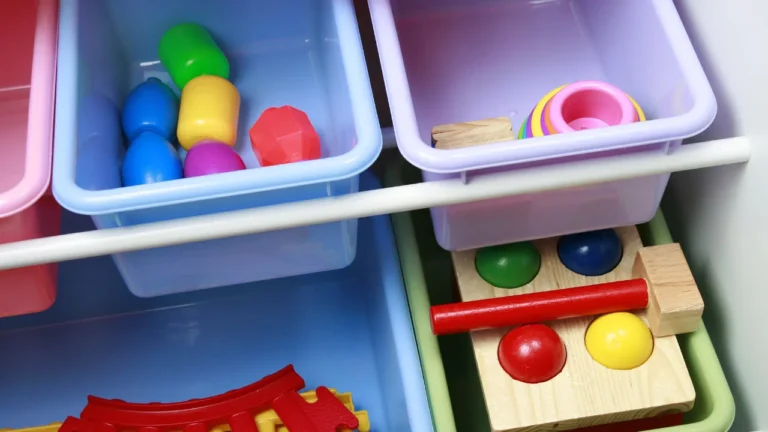How to Talk to Your Teen About Sneaking Out of the House: A Guide for Parents

Ever feel that sinking feeling in your gut when you discover your teenager isn’t tucked safely in bed? Maybe you hear the back door creak open at 2 am or find an empty window with a trail of disturbed grass leading away. Yep, the dreaded act of sneaking out.
It’s a situation that can send even the calmest parent into a spiral of worry. Our teens’ safety is paramount, and the thought of them out there alone is terrifying. But before you jump to conclusions and unleash the wrath of a thousand groundings, take a deep breath. Panicking won’t solve anything.
The key here is communication. Not the yelling, finger-pointing kind, but a calm, open conversation where you can understand why your teen felt the need to sneak out in the first place. This guide will equip you with the tools you need to navigate this tricky situation.
We’ll explore how to create a safe space for talking, ask the right questions, and rebuild trust – all while keeping your teen safe.
So, grab a cup of coffee (or a glass of wine, no judgment!), find a quiet corner, and let’s get started on having that important conversation about sneaking out.
Understanding Why Your Teen Sneaks Out of the House
Let’s face it, teenagers are a walking paradox. They crave independence yet desperately need our guidance. Sneaking out often stems from this very desire for autonomy. Maybe they want to attend a party you wouldn’t approve of, feel left out of their social circle, or simply crave a taste of grown-up freedom.
Understanding the “why” behind the sneaking out is crucial before diving into “the talk.” Were they pressured by friends? Is there something going on at home that’s pushing them to seek excitement elsewhere? Approaching the conversation with an open mind, free from judgment, shows your teen you’re genuinely interested in their perspective.
Teenagers are notoriously bad at communicating their feelings. Don’t expect a clear-cut answer right away. But by creating a safe space for open dialogue, you might be surprised by what you uncover. Here’s the thing: understanding the root cause doesn’t necessarily mean condoning the behavior, but it’s a vital first step in addressing it.

Creating a Calm and Open Environment for Talking to Your Teen About Sneaking Out
Okay, you’ve (hopefully) resisted the urge to unleash your inner drill sergeant. Now comes the part where you talk to your teen about sneaking out. But before you dive in, setting the scene is key. Imagine this: you barge into their room, arms crossed, face thunderous – not exactly conducive to a productive conversation, right?
Instead, choose a neutral time when emotions have settled down. Maybe it’s after dinner when everyone’s relaxed, or during a weekend outing where you can have a casual chat. Find a quiet space where you can talk one-on-one without distractions from siblings or ringing phones.
Remember, your body language speaks volumes. Ditch the crossed arms and furrowed brows. Make eye contact, lean in to show you’re engaged, and most importantly, listen actively. This means putting away your phone, showing genuine interest in what they have to say, and avoiding interrupting. By creating a calm and open environment, you’re letting your teen know it’s safe to talk without fear of judgment.
Starting the Conversation About Sneaking Out
Alright, the scene is set – a calm environment, open body language, and a listening ear. Now comes the tricky part: initiating the conversation about sneaking out. Here’s the thing, you don’t want to sound accusatory or make them feel like they’re in trouble (even though, let’s be honest, they kind of are!).
Instead, try starting with open-ended questions that encourage dialogue. For example, you could say, “Hey [Teen’s Name], I wanted to talk about what happened the other night. Can you tell me why you felt the need to sneak out?” This approach shows you’re concerned about their well-being and interested in understanding their perspective.
Here are some additional tips for starting the conversation:
Remember, this is the beginning of a conversation, not an interrogation. By starting with empathy and a willingness to listen, you’re laying the groundwork for a productive and honest exchange.
Setting Clear Expectations and Boundaries About Sneaking Out
So you’ve had a productive conversation about why your teen snuck out and you’ve managed to keep the scolding to a minimum (high fives!). Now it’s time to establish some clear expectations and boundaries.
Here’s the thing, teenagers crave structure, even if they don’t always admit it. Having clear rules and guidelines helps them understand what’s expected and the consequences of breaking those rules.
Sit down with your teen and have a conversation about reasonable curfews that align with their age and activities. Discuss the importance of open communication and letting you know where they’ll be and who they’re with. It’s also a good idea to establish consequences for sneaking out, like a loss of privileges or a later curfew for a set period.
Remember, the key here is striking a balance. You want to set clear boundaries for their safety but also encourage open communication and negotiation. This collaborative approach fosters trust and allows your teen to feel some sense of control over the situation.
Here are some additional points to consider:
By setting clear expectations and working with your teen, you can create a safe and healthy environment for them to grow and explore their independence.
Building Trust and Addressing Underlying Issues Related to Sneaking Out
Let’s face it, sneaking out is a major breach of trust. But here’s the good news: rebuilding trust is possible! It takes time, effort, and a genuine commitment from both you and your teen.
The foundation of trust lies in open communication and respecting boundaries (on both sides!). Here are some ways to rebuild trust after your teen has snuck out:
Remember, rebuilding trust is a two-way street. By demonstrating your trustworthiness and respecting your teen’s needs, you’ll be well on your way to a stronger, more open relationship.
Now, sneaking out might not be the only symptom of a larger issue. Maybe your teen is struggling with peer pressure, feeling isolated, or facing challenges at school. If you suspect there’s more going on, don’t hesitate to seek professional help from a therapist or counselor who specializes in adolescents.
Additional Tips for Effective Communication When Talking to Your Teen About Sneaking Out
Here are some additional communication tips to keep in mind when talking to your teen about sneaking out:
Effective communication is key to navigating this situation and building a stronger bond with your teen.

Resources for Parents and Teens
Talking to your teen about sneaking out can be challenging, but you don’t have to go it alone. Here are some resources to provide further support:
- The National Parent Helpline: 1-855-4A PARENT (1-855-427-2736) offers free, confidential support and resources for parents facing a variety of challenges, including communication with teens.
- The National Runaway Safeline: 1-800-RUNAWAY (1-800-786-2929) provides crisis intervention and resources for teens considering running away or who have already left home.
- The American Academy of Child and Adolescent Psychiatry (AACAP): https://www.aacap.org/ offers a wealth of information on adolescent development and behavior, including tips for communication and building trust.
Remember, seeking professional help is a sign of strength, not weakness. Don’t hesitate to reach out if you feel overwhelmed or need additional guidance.
Conclusion
Phew! We’ve covered a lot of ground, and hopefully, you feel more equipped to navigate that tricky conversation about sneaking out. Remember, the most important takeaway is this: open communication is key.
Instead of focusing on punishment, prioritize understanding why your teen felt the need to sneak out in the first place. By creating a safe space for dialogue and working together to establish clear expectations, you can rebuild trust and address the root cause of the behavior.
This might not be an easy conversation, but it’s a crucial one. By approaching the situation with empathy, patience, and a willingness to listen, you can strengthen your relationship with your teen and ensure their safety and well-being.
So, the next time you discover an empty window or hear a creaking door, take a deep breath, remember these tips, and approach the conversation with an open heart. You’ve got this!







